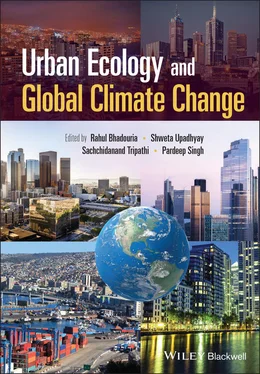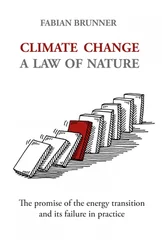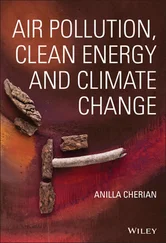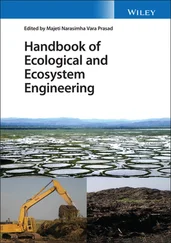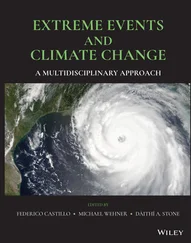Urban Ecology and Global Climate Change
Здесь есть возможность читать онлайн «Urban Ecology and Global Climate Change» — ознакомительный отрывок электронной книги совершенно бесплатно, а после прочтения отрывка купить полную версию. В некоторых случаях можно слушать аудио, скачать через торрент в формате fb2 и присутствует краткое содержание. Жанр: unrecognised, на английском языке. Описание произведения, (предисловие) а так же отзывы посетителей доступны на портале библиотеки ЛибКат.
- Название:Urban Ecology and Global Climate Change
- Автор:
- Жанр:
- Год:неизвестен
- ISBN:нет данных
- Рейтинг книги:4 / 5. Голосов: 1
-
Избранное:Добавить в избранное
- Отзывы:
-
Ваша оценка:
- 80
- 1
- 2
- 3
- 4
- 5
Urban Ecology and Global Climate Change: краткое содержание, описание и аннотация
Предлагаем к чтению аннотацию, описание, краткое содержание или предисловие (зависит от того, что написал сам автор книги «Urban Ecology and Global Climate Change»). Если вы не нашли необходимую информацию о книге — напишите в комментариях, мы постараемся отыскать её.
Urban Ecology and Global Climate Change
Urban Ecology and Global Climate Change — читать онлайн ознакомительный отрывок
Ниже представлен текст книги, разбитый по страницам. Система сохранения места последней прочитанной страницы, позволяет с удобством читать онлайн бесплатно книгу «Urban Ecology and Global Climate Change», без необходимости каждый раз заново искать на чём Вы остановились. Поставьте закладку, и сможете в любой момент перейти на страницу, на которой закончили чтение.
Интервал:
Закладка:
It is gratifying to note that the editors of the book ‘ Urban Ecology and Global Climate Change’ have chosen very well thought of five thematic sections focussing mainly on the interplay between cause and effect of urban pressure and climatic sustainability. These sections range from the perspective of (i) urban ecology and climate change, (ii) emerging technologies for designing urban landscape, (iii) urban biodiversity and natural resource exploitation, (iv) impact of fast urbanisation on the development sustainability, and (v) threat of climate change to ecological conservation. These themes have been very intelligently covered through 16 chapters. The choice of the editors for contributing authors of the 16 chapters is worth appreciation. It ranged from different parts of India besides scientists from Thailand, Czech Republic, Austria, Bangladesh, and Nepal.
In my opinion, the book will be very useful to the students and scientists not only in the field of environment and ecology but equally well for the town and country planning, policymakers, architects, managers of the river and coastal areas, and state and central government decision‐makers, that too, not only in India, but the world over.
While congratulating the editors, authors, and the publishers for producing this title, I extend my best wishes for the success of the title which is very timely and relevant.
R. K. Kohli PhD, FNA, FASc, FNASc, FNAAS, FBS, FNESA
Vice Chancellor, Amity University Punjab, Mohali – 140306, India
Professor, JC Bose National Fellow, Certified Senior Emeritus Ecologist, ESA, USA Former Vice chancellor, Central University of Punjab
2021
Foreword
P. K. Joshi
Global Climate Change largely impacts urban ecosystems and urban life. At the same time, the urban ecosystems are a key contributor to the global climate change. The recent reports on impacts of global climate change suggest that the impacts will be immense, enduring, and pernicious on entire human systems. Only scientific knowledge and actions at multiple scales can settle adaptation and mitigation to such impacts. However, to attempt this an interface between the urban ecosystems and the global climate change needs to be explored. The rate of urbanisation across the world has made it critical to keep urban ecosystems, their structural and functional components, and their dynamism central to the global environmental research and sustainability challenges. In fact, the science and policy communities have increasingly recognised this.
Urban Ecology and Global Climate Change is timely and a very welcome addition to the pertinent literature to unwrap the obstacles to adaptation and mitigation measures and sustainable development. It connects the relatively less known feedbacks between urban ecology and global environment change. The former is an eponymous discipline promoting resilient and sustainable urban spaces where human and nature coexist. The latter refers specifically to the rise in global temperatures since the mid‐twentieth century to the present and its unprecedented impacts. Thus, by bridging these two important disciplines, the book fills an important niche which is no longer possible to support through a few research papers. The conditions are too complex in both the areas, urbanisation and climate change; thus, interlinkages need to be understood, documented, and reported for the wider audience. I am pleased to see that this volume is successful in achieving this.
In a way, the book examines the interacting forces of urbanisation and global climate change that are currently shaping the ecology of urban centres and the scope of future planning, design, and management strategies, while enhancing the environmental, social, and cultural values of these novel ecosystems. The book presents a wide range of contemporary aspects of urban ecology that are useful in ecological research, and that I hope others will find of benefit in design of research, or in reading and evaluating ongoing developments. I must congratulate the editors and authors to address intersections of queries of ecologist, environmentalist, geographers, urban planners, policymakers, and general public in this volume. It will serve as a wonderful guide to prompt these stakeholders to embrace the ecological concept of sustainability and understand the basics of urban ecology to deal with the questions of global climate change to create functional urban landscape in this challenging era.
P. K. Joshi
Professor – School of Environmental Sciences
Chairperson – Special Centre for Disaster Research
Jawaharlal Nehru University, New Delhi
2021
1 Urban Ecology and Climate Change: Challenges and Mitigation Strategies
Rishikesh Singh1,2, Pramit Verma1, Vipin Kumar Singh3, Pratap Srivastava4, and Arun Kumar5
1 Institute of Environment & Sustainable Development (IESD), Banaras Hindu University, Varanasi, India
2 Department of Botany, Faculty of Science, Panjab University, Chandigarh, India
3 Department of Botany, Institute of Science, Banaras Hindu University, Varanasi, India
4 Department of Botany, Shyama Prasad Mukherjee Post‐graduate College, University of Allahabad, Prayagraj, India
5 Bihar Agriculture University, Bhagalpur, Bihar, India
1.1 Introduction
Humankind is facing three major challenges viz. human overpopulation, urbanisation, and climate change with the onset of the twenty‐first century (Steiner 2014). Presently, about seven billion (expected to reach 8.2 and 9 billion by 2025 and 2050, respectively) people are inhabiting the Earth which is more than any previous time. Urban areas and people living in the cities are increasing rapidly in size, globally (Mitchell et al. 2018). Over half (~54%) of the world's population is residing in the urban areas which is expected to grow to 60 and 80% by the year 2030 and 2050, respectively (Lee 2011; Vasishth 2015). Urbanisation phenomenon can be seen occurring on all the continents (except Antarctica); however, rapid urbanisation is happening, particularly in the Asia and Sub‐Saharan Africa (Yu et al. 2017). Rapid urbanisation is putting severe stress on the planet Earth resulting in changes in the ecosystems from the landscape to the global scales (Steiner 2014; Colding and Barthel 2017). Urbanisation leads to the rapid conversion of natural pervious land surfaces to various impervious surfaces in the built forms like buildings and roads which resulted in changes in many ecosystem functions such as water infiltration and availability, species composition, soil properties, and thermal properties of the surfaces (Gaston et al. 2010; Seto et al. 2012; Yu et al. 2017). Urbanisation has not only affected the tangible features of the natural ecosystems but also resulted in the modifications of intangible aspects such as biogeochemical cycling and climate change (Kattel et al. 2013; Mitchell et al. 2018). Therefore, need for the proper planning and designing of the urban ecosystems has been arisen for reducing the ecological footprints (on per capita basis) of these ecosystems for managing the trio of challenges mentioned in the opening line of this chapter (Steiner 2014; Vasishth 2015).
Urban ecosystems are not only the rich nodes of civilisation but also have become the engines of development and divers of various environmental changes even at fine spatial scales (Kattel et al. 2013; Verma et al. 2020a). Urban ecosystems are characterised by intensive human population and its supportive infrastructures such as built‐up areas in the form of cities, towns, and megacities, developed by profound changes in the landscape structures and energy processes at the cost of natural ecosystems (Forman 2014; Jaganmohan et al. 2016; Yu et al. 2017; Mitchell et al. 2018; Verma et al. 2020a). The urban ecosystems are highly heterogeneous and fragile systems, which are facing many challenges due to massive human interferences (Ma et al. 2020). Since humans represent the core of urbanisation's structural processes, their activities related to aesthetic values, goods and services (food and water), energy and waste generation, and recycling are the driving factors of all the changes occurring in these ecosystems (Carpenter and Folke 2006; Chapin et al. 2011; Kattel et al. 2013). Thus, urban ecosystems are the complex ecosystems characterised by the interplays of socio‐economic dimensions and biophysical (natural processes) interactions occurring at various spatio‐temporal scales (Kattel et al. 2013; Ma et al. 2020). Most notably, the land‐use change and the infrastructural development by the human decide the future of the urban ecosystems which are already facing various unprecedented social, demographic, technological, and environmental challenges (Niemelä 2014; Steiner 2014). Thus, there comes the need to understand the urban ecosystems as an ecological system which can play and sustain even under the human dominance (Grimm et al. 2008). In the next sub‐section, the concept of urban ecology and its need for the sustainable urban development has been highlighted.
Читать дальшеИнтервал:
Закладка:
Похожие книги на «Urban Ecology and Global Climate Change»
Представляем Вашему вниманию похожие книги на «Urban Ecology and Global Climate Change» списком для выбора. Мы отобрали схожую по названию и смыслу литературу в надежде предоставить читателям больше вариантов отыскать новые, интересные, ещё непрочитанные произведения.
Обсуждение, отзывы о книге «Urban Ecology and Global Climate Change» и просто собственные мнения читателей. Оставьте ваши комментарии, напишите, что Вы думаете о произведении, его смысле или главных героях. Укажите что конкретно понравилось, а что нет, и почему Вы так считаете.
